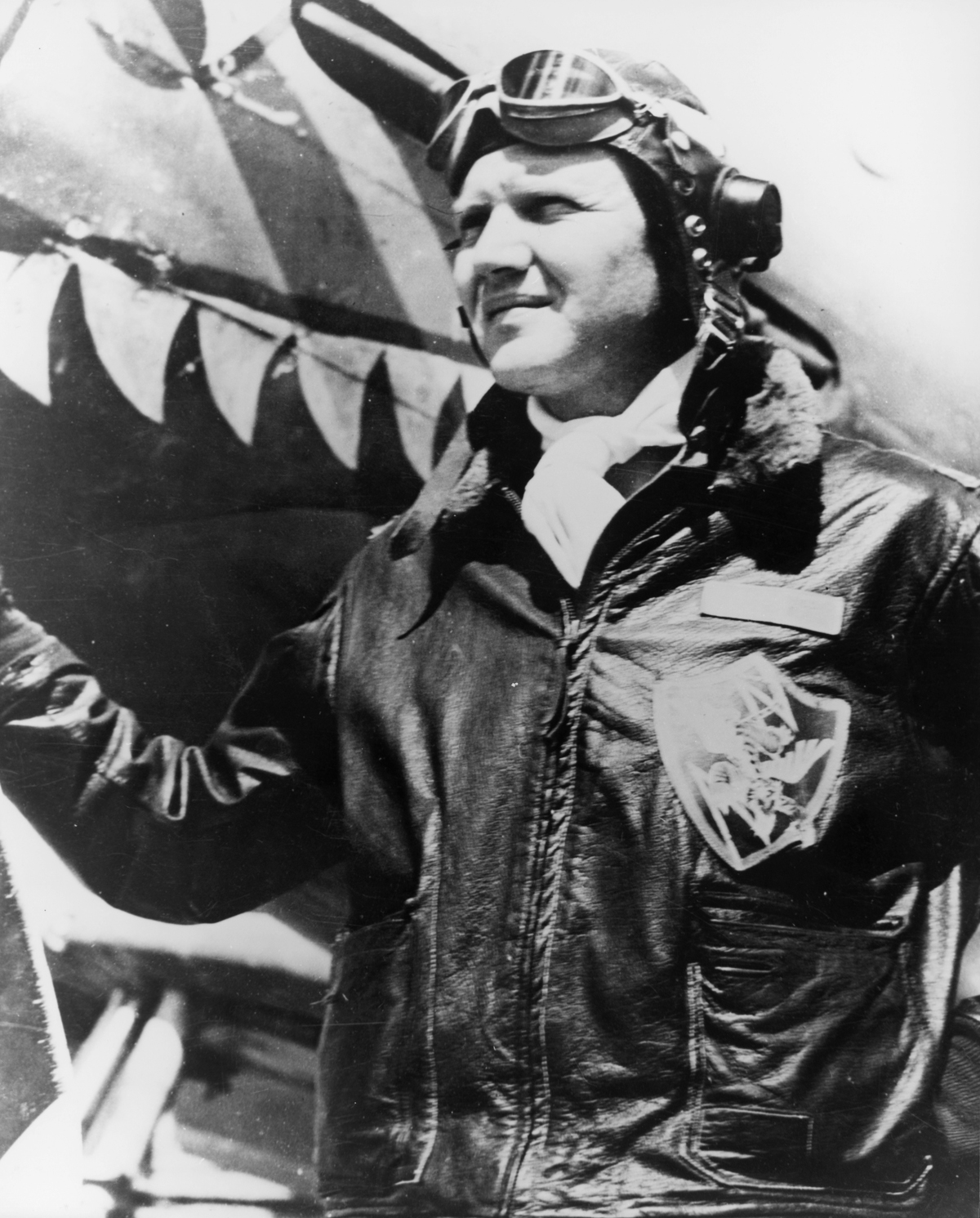By November 1943, the Chinas Air Task Force had disbanded, after destroying 149 Japanese aircraft, while losing only 16 of its own. Maj. Gen. Claire Chennault was commanding the 14th Air Force. Needing someone to head the 23rd Fighter Group, he turned to Tex Hill.
Headquartered at Kweilin, the 23rd FG once again consisted of its three original squadrons. The 74th remained at Kunming to attack targets in northern Burma and escort 11th Bomb Squadron B-25s on missions. Maj. Elmer “Rich” Richardson led the 75th from Kweilin, the site of the 23rd’s headquarters. The 76th was split between operations at Hengyang and Suichwan.
Chennault also commanded the 51st Fighter Group, mainly supporting Rear Echelon operations to the west; the 16th, 25th, 26th and 449th Fighter Squadrons; and the 308th Bombardment Group.
Hill had arrived in time to lead the highly successful 1943 Thanksgiving Day raid on the airfield at Formosa. Thirty U.S. fighters and bombers—14 B-25s, eight P-38s and eight P-51As—attacked more than 200 Japanese bombers and fighters in the air and on the ground at Shinchiku Airdrome, shooting 15 enemy aircraft out of the air and burning unsuspecting bombers on the ground.
“We went across, right on the deck, just about 100 feet, to keep from being detected,” Hill said. “We went about 100 miles across the straits. When we got there, a transport was coming down. I dispatched a 38 that shot it down. The bombers were just coming back from some mission, and they were in the landing pattern. I had the B-25s loaded with frags. They pulled up a thousand feet and dropped them. They had gasoline trucks, everything out there on the field to receive these people. When we left, about 43 airplanes were burning.”
That day, Hill became the first P-51 pilot to shoot down a Japanese aircraft. For his leadership of the raid, he received another Distinguished Flying Cross. Within a month of the raid, the 28-year-old was promoted to colonel.
In January 1944, when the Forward Echelon became the 68th Composite Wing, Hill assumed the duties of vice wing commander. He would also soon be heading to Hengyang to take over fighter operations in support of the defense of Changteh. The 75th was already there, and the 74th would be joining it.
On March 5, Hill and three of his pilots flew back to India to retrieve a flight of P-51Bs, equipped with extra fuel tanks and improved engines. That spring, Japan devised a strategy it hoped would force China into surrender. The plan called for a land supply route, stretching from Indochina to Peiping and running along the Hanoi-Peiping railroad. Part of the plan was to demolish the bases at Hengyang, Lingling and Kweilin, through which the railroad ran.
The first step of Operation Ichi-Go was the offensive from Burma toward the Hump bases in India’s Assam Province. By the middle of May, the Japanese had cleared the northernmost segment of the railroad, from Hankow to Peiping.
On May 6, Hill led 54 aircraft—including P-51s, P-38s, P-40s and B-24s—to hammer the Yochow staging areas. He was flying a P-51B as they engaged enemy fighters over Tungting Lake. Hill downed one Oscar, bringing his total victories to 18 1/4.
On May 26, the Japanese stormed Changsha. Following that, the 14th would pull together to hinder the troops and help the Chinese who were defending the city, frag-bombing columns of soldiers and making innumerable strafing runs.
On June 12, Hill set out in foul weather toward Tungting Lake, intent on showing a new member of the 74th Fighter Squadron how to strafe enemy targets. As they flew above the Siang River, Hill opened fire on a 51-foot motorboat, headed south and packed with Japanese troops. He sank the boat, but the troops had also fired on him, causing his canopy to fly off his aircraft. Blinded temporarily when his map flew in his face, he came within inches of plowing into the riverbank.












